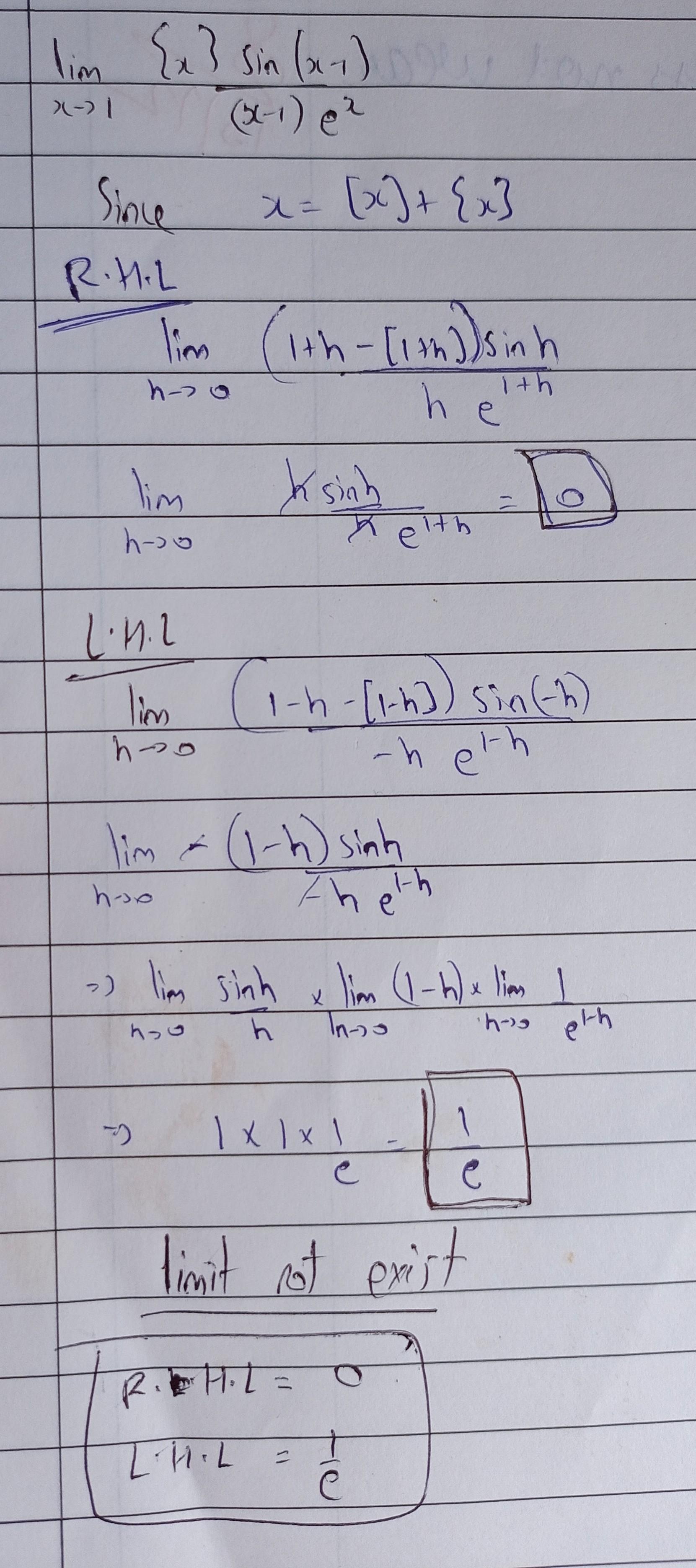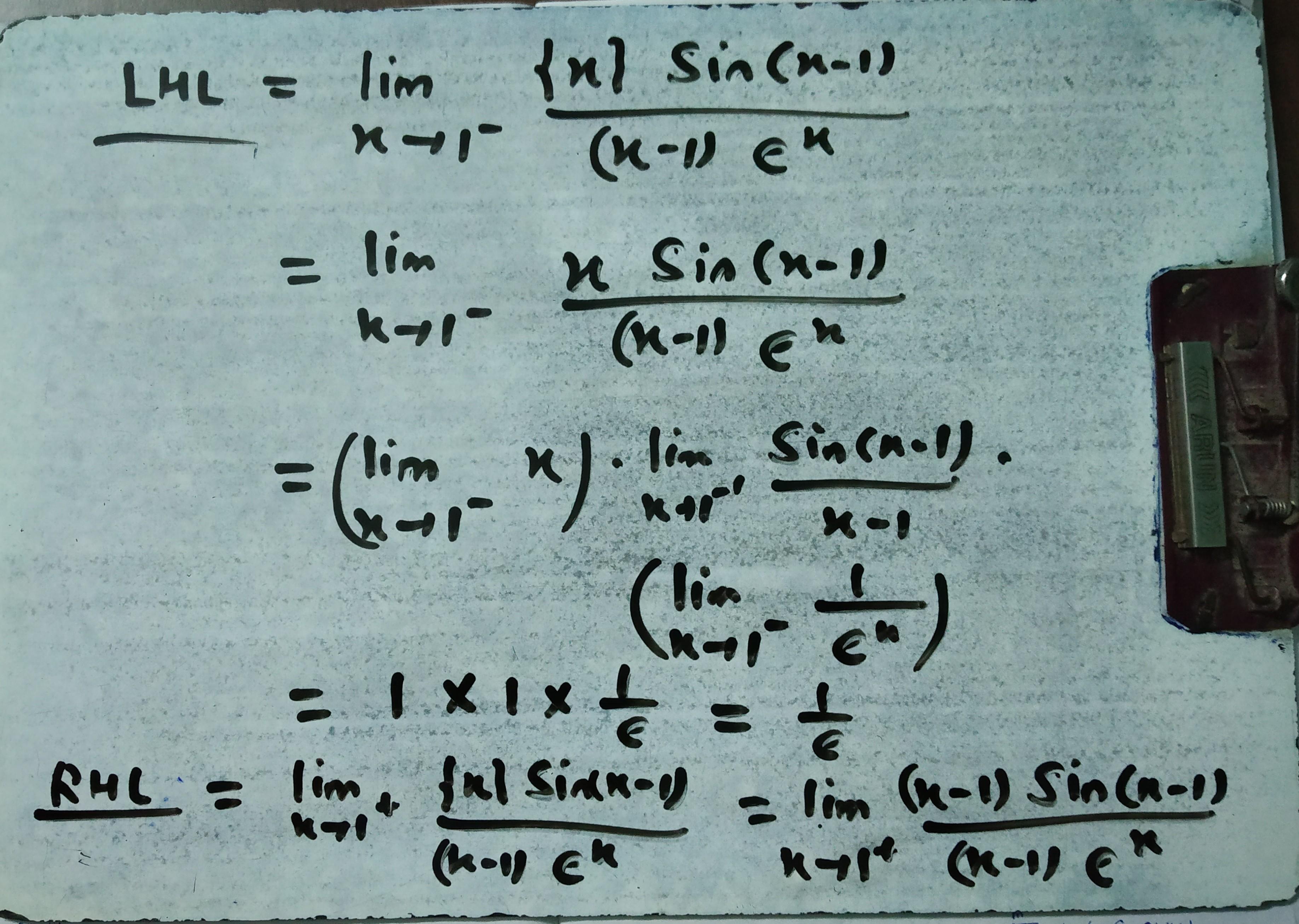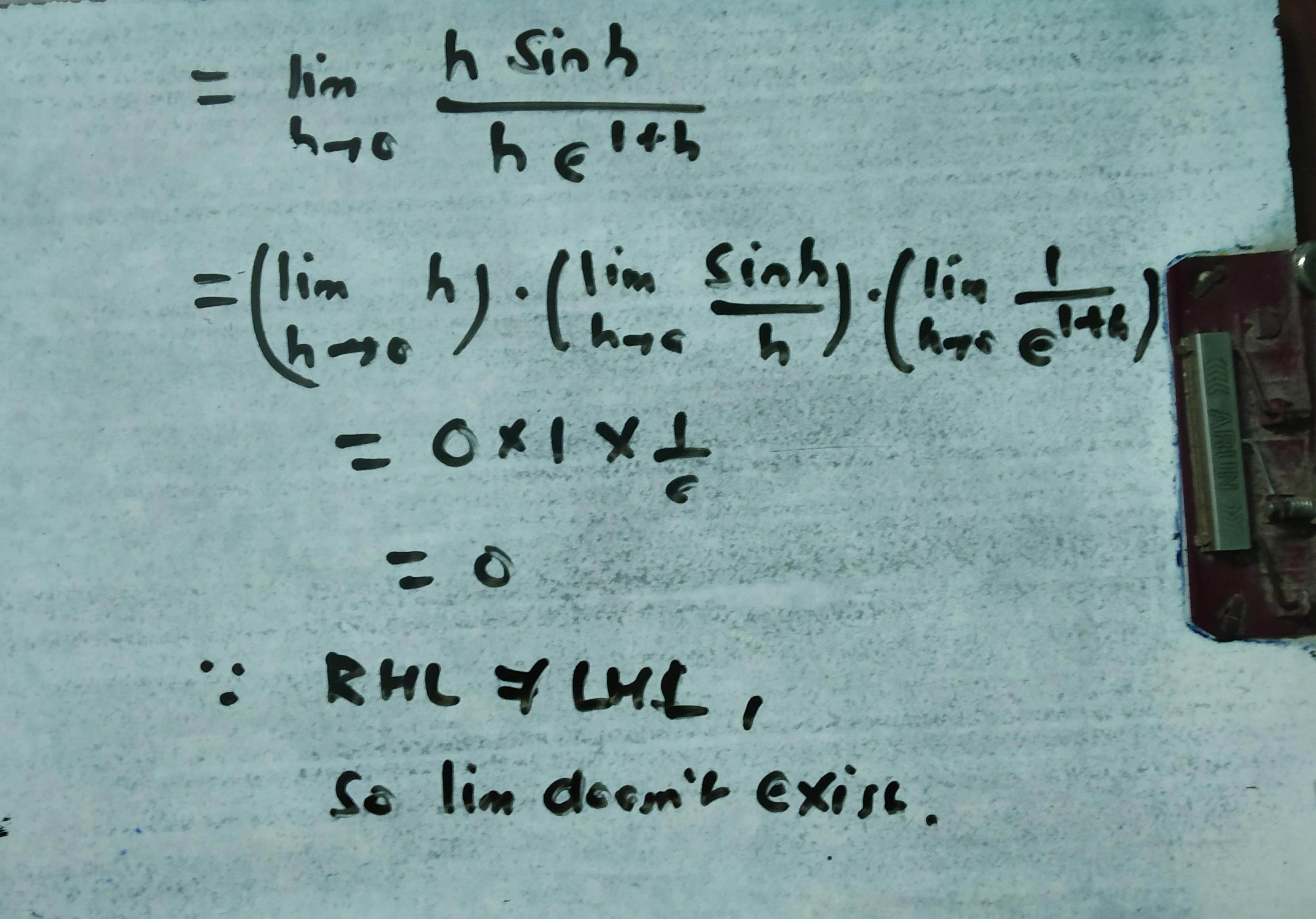Time management is very much important in IIT JAM. The eduncle test series for IIT JAM Mathematical Statistics helped me a lot in this portion. I am very thankful to the test series I bought from eduncle.
Nilanjan Bhowmick AIR 3, CSIR NET (Earth Science)- IIT JAM
- Mathematics (MA)
Solve this question
- 0 Likes
- 3 Comments
- 0 Shares
-
![comment-profile-img]() >
>
-
![comment-profile-img]() >
>
-
![eduncle-logo-app]()
I think it's limit will not exist because when x is 1+ than {x} tends to 0 and when x is 1- ,{x} tends to 1 then how could it's limit exist
![eduncle-logo-app]()
see the updated answer...let me know that whether you r satisfied with this answer or not...we will discuss
![eduncle-logo-app]()
when x is 1- {x} will tends to 1 but you have written as 0 how it's possible
![eduncle-logo-app]()
Yes harsh ... you are absolutely right... I did mistake in fractional part of x...when x tends to 1-, then x is almost near to 1 but strictly less than 1...so it's fractional part will be itself, that is x.... for example, fractional part of 0.999 is 0.999 itself.... so using that, the LHL is coming out to be 1/e which is not equal to RHL, so limit doesn't exist
Do You Want Better RANK in Your Exam?
Start Your Preparations with Eduncle’s FREE Study Material
- Updated Syllabus, Paper Pattern & Full Exam Details
- Sample Theory of Most Important Topic
- Model Test Paper with Detailed Solutions
- Last 5 Years Question Papers & Answers
Sign Up to Download FREE Study Material Worth Rs. 500/-











 >
>











Deepak singh 1
2nd way